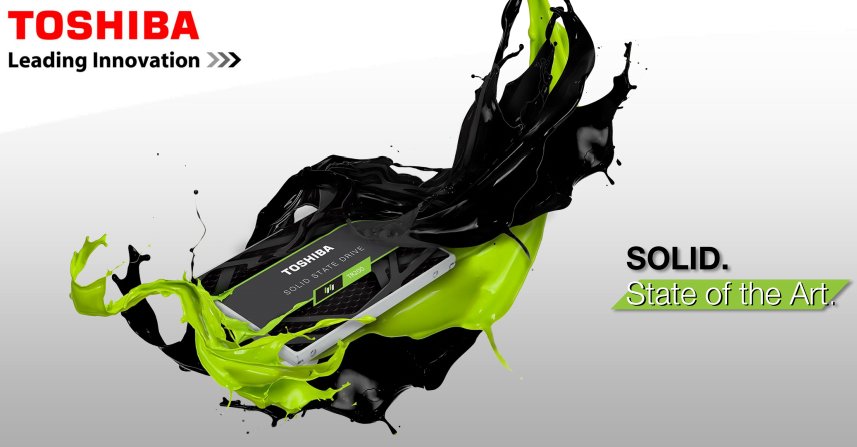Early Verdict
The largest TR200 SSD delivers the best price to capacity and undercuts the existing go-to product, but the performance is significantly less. We can't recommend this product at $290 and it would be difficult to put a reasonable price on this SSD.
Pros
- +
$45 less than an 850 EVO 1TB
- +
Excellent software package
Cons
- -
Low performance
- -
Still overpriced
- -
Poor battery life (notebooks)
- -
Poor user experience
Why you can trust Tom's Hardware
Specifications & Pricing
Toshiba first unveiled the TR200 in August at a pair of industry trade shows including GamesCon. After a few months of fiddling with programming and firmware, the series is finally ready for retail. Surprisingly, the TR200 will be Toshiba's only new SATA SSD in 2017.
The Toshiba TR200 marks the beginning of several major trends that you need to be mindful of. The most obvious is that Toshiba's 3D BiCS NAND technology is finally coming to retail products. BiCS (Bit Cost Scalable) is the company's codename for its 3D vertical NAND technology, much like Samsung’s V-NAND branding. The new NAND features charge trap technology that allows Toshiba to increase die density without sacrificing quality (as measured by endurance). Naturally, that reduces cost.
Toshiba's marketing material reveals the other new trend. Inside, an entry states:
[The TR200] will be the only SATA-based retail released by Toshiba...
There is a little more to the statement, but it says that the TR200 will be Toshiba's only new retail SATA SSD in 2017. The TR200 is a low-performance DRAMless model, so the shift means Toshiba will move mainstream and enthusiast class products to NVMe from this point forward. I can't imagine any company fully moving away from SATA this early, but the next SATA SSD from Toshiba will most likely come with some type of legacy branding.
For many of our readers, SATA SSDs are already legacy products. Low-cost NVMe SSDs like the Intel 600p, MyDigitalSSD BPX, and upcoming DRAMless products are already the new entry point for enthusiasts.
DRAMless SATA SSDs have carved out their place in the market. There is always a need for low cost components for various applications, but those may be outside of your own personal workload. The TR200 certainly isn't an incendiary enthusiast SSD, and it's not even a tamed mainstream drive, but not every computer has to spit fire. Toshiba went conservative with its first retail BiCS SSD.
Get Tom's Hardware's best news and in-depth reviews, straight to your inbox.
Specifications
The new TR200 series will come to market in 240GB, 480GB, and 960GB capacities. It's rare to see a 1TB class entry-level SSD of any variety in the NAND shortage era, but 1TB DRAMless models are even rarer because the design presents multiple technical challenges.
Toshiba has released several DRAMless SSDs over the last several years with varying degrees of performance and market success. The company has the most experience with this type of product, but most of its DRAMless SSDs are firmly tucked away in OEM systems. The TR200 will follow a long line of reliable products, and that's the number one concern we always have with entry-level SSDs; reliability is the most important feature.
On paper, the TR200 features very respectable performance numbers for all three capacities. Sequential read performance comes to 525 MB/s, and Toshiba claims sequential write performance spans up to 525 MB/s. Our early preview of BiCS NAND with the OEM-focused Toshiba XG5 proved the flash is more than capable of sustaining this high level of sequential write performance.
Random performance is the dividing line between mainstream and entry-class SSDs, and the TR200's random performance is down compared to the mainstream-class products we've tested in the past. This series can push 80,000/87,000 random read/write IOPS, but those are the infamous up to numbers that we hoped would vanish in the new 3D era.
The TC58NC1010GSB controller is new to Toshiba's retail product line. It's similar to Phison's new S11, and the two may even share the same silicon. Toshiba is very protective of the finer architectural details, so we don't have an expansive knowledge of the controllers' feature set.
Pricing & Warranty
Toshiba's MSRP for the TR200 series is $89.99 (240GB), $149.99 (480GB), and $289.88 (960GB). The two smaller models are just $10 less than the comparable Samsung 850 EVOs. The 850 EVO 1TB currently sells for $334.99 at Newegg, which Toshiba undercuts by $45.
Toshiba backs the new TR200 series with a limited three-year warranty. The "limited" designation stems from the endurance rating, which quantifies the amount of data you can write to the drive before the warranty expires. Toshiba gives you 60 TB (120GB), 120 TB (240GB), and 240 TB (960GB) of warrantied data writes.
Software
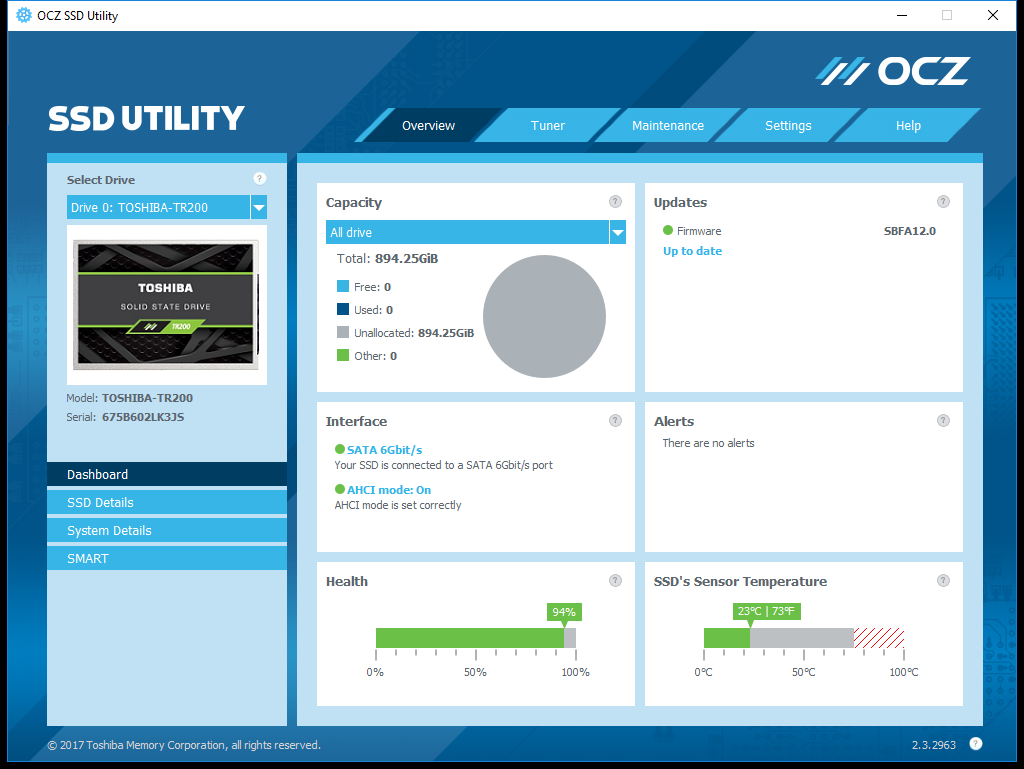









The OCZ team has been fully integrated into Toshiba, so the company retired the OCZ Guru software. The newly-renamed SSD Utility still delivers a full-featured experience.
Packaging
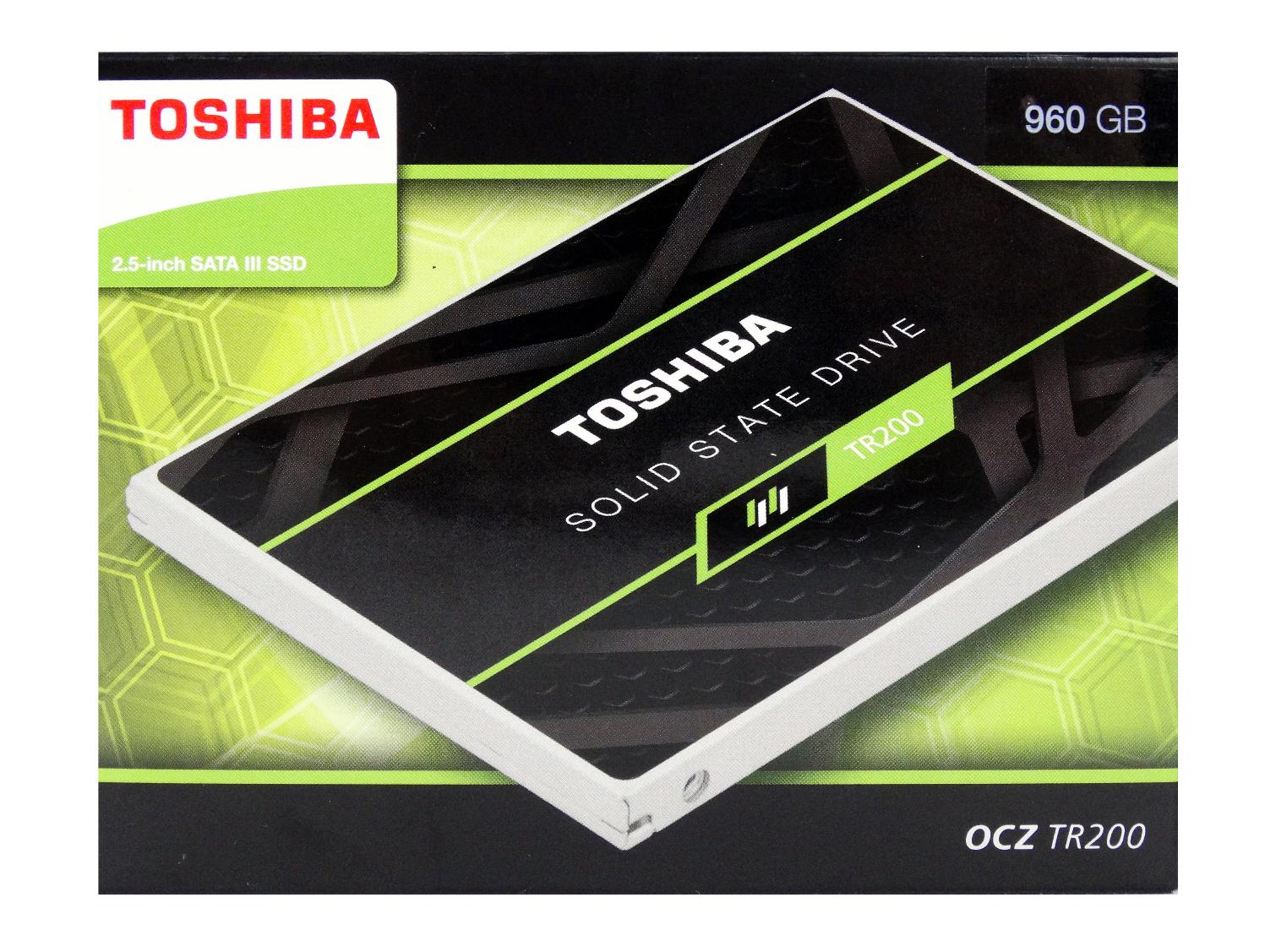
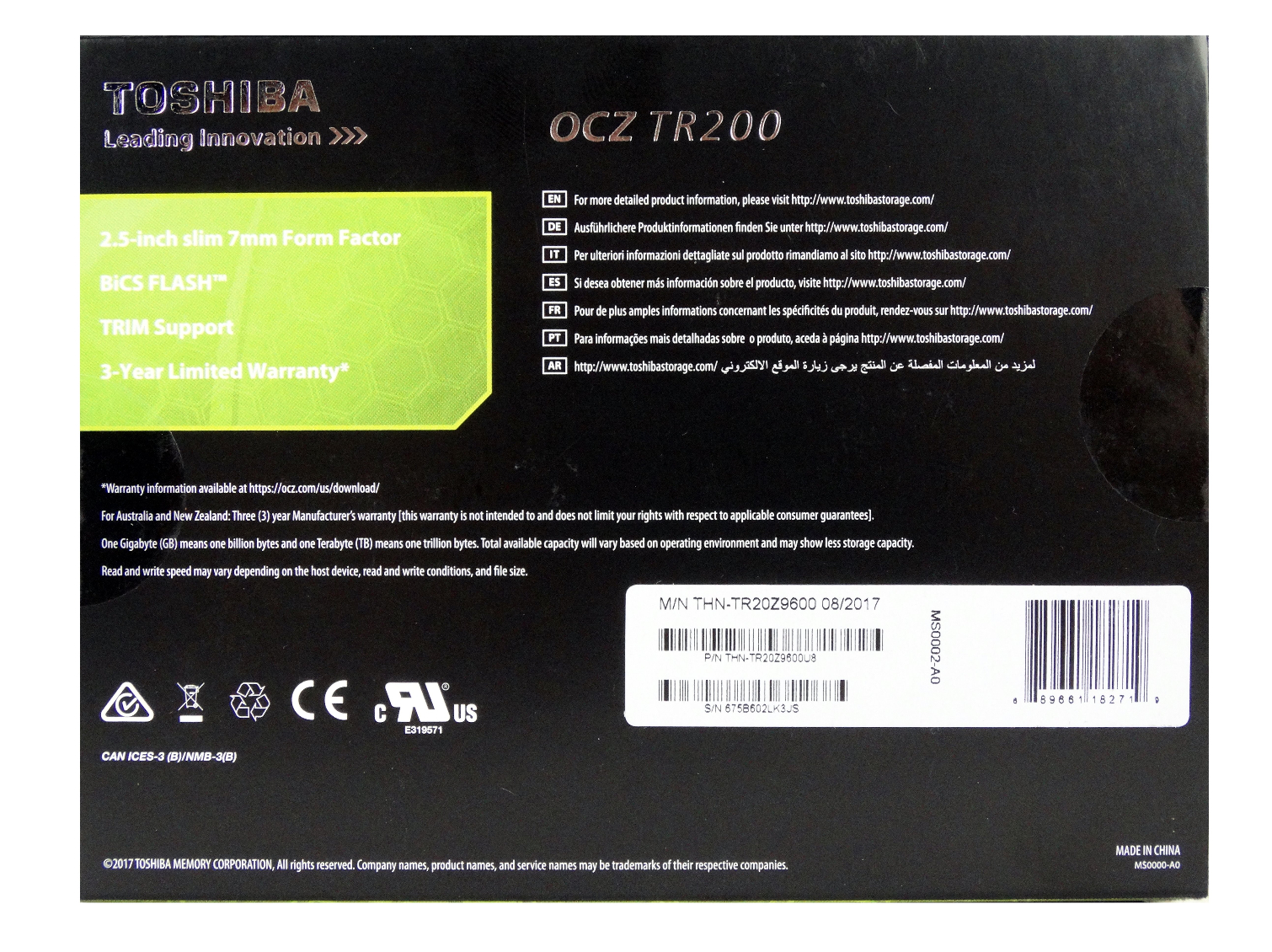

The integration has brought some color and life into the Toshiba consumer SSD lineup. The TR200 packaging looks great; it doesn't give away the fact that this is an entry-level SSD.
A Closer Look

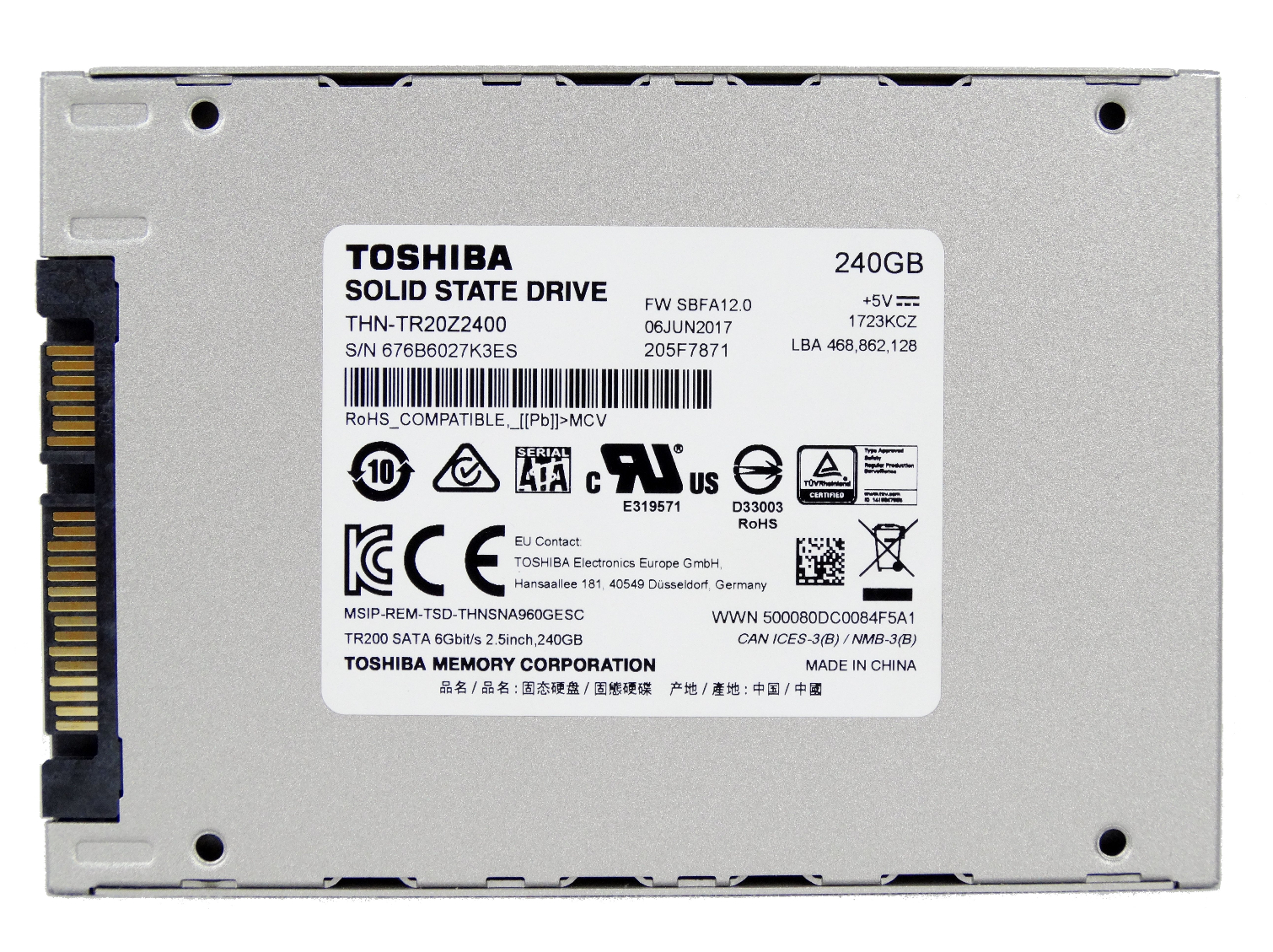

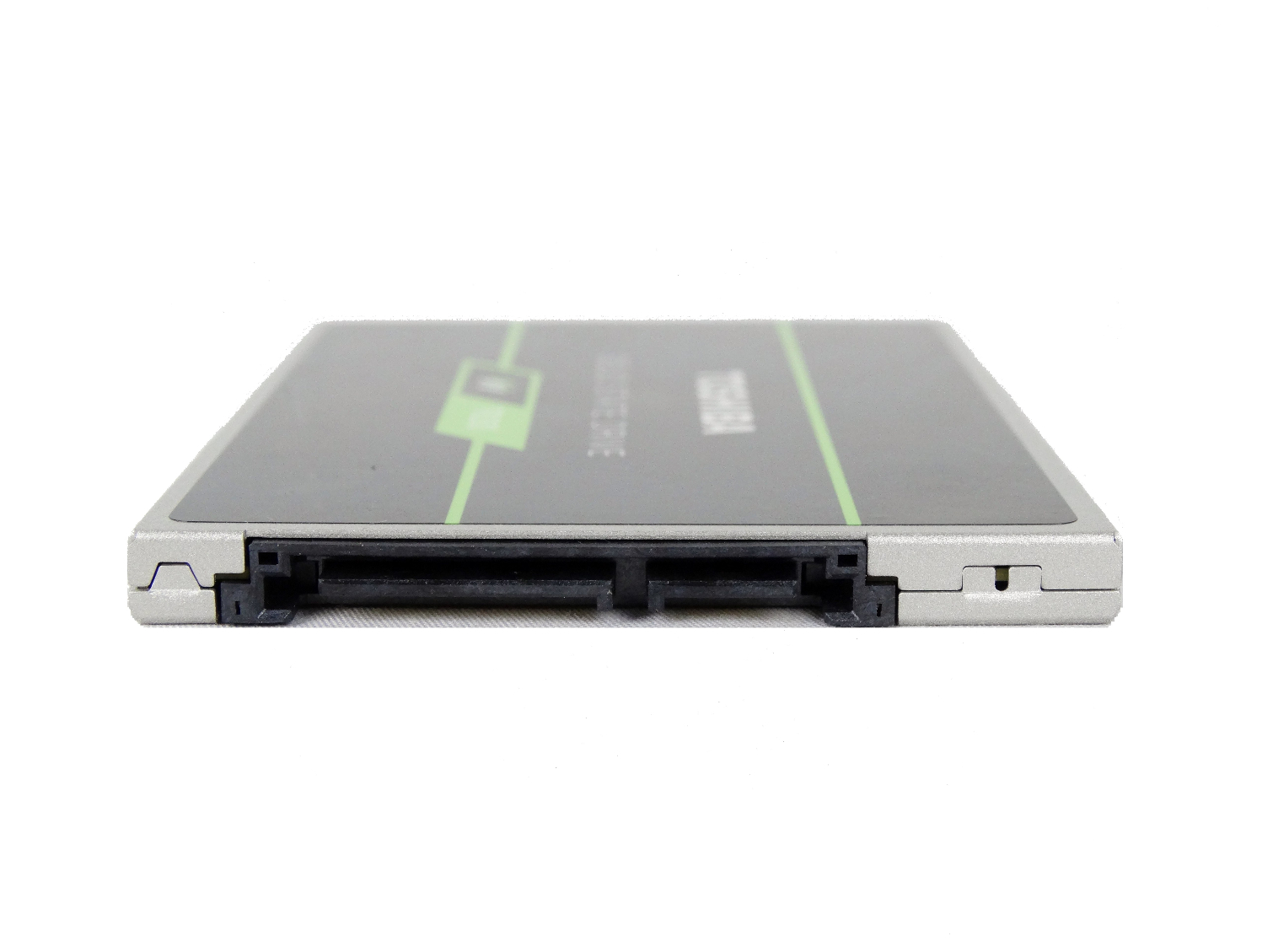
The Toshiba TR200 uses the same standard entry-level case we've seen a hundred times before. The tabbed system is devoid of screws and built for economics over aesthetics. The metal structure acts as a heatsink to pull the heat away from the controller.
Internals
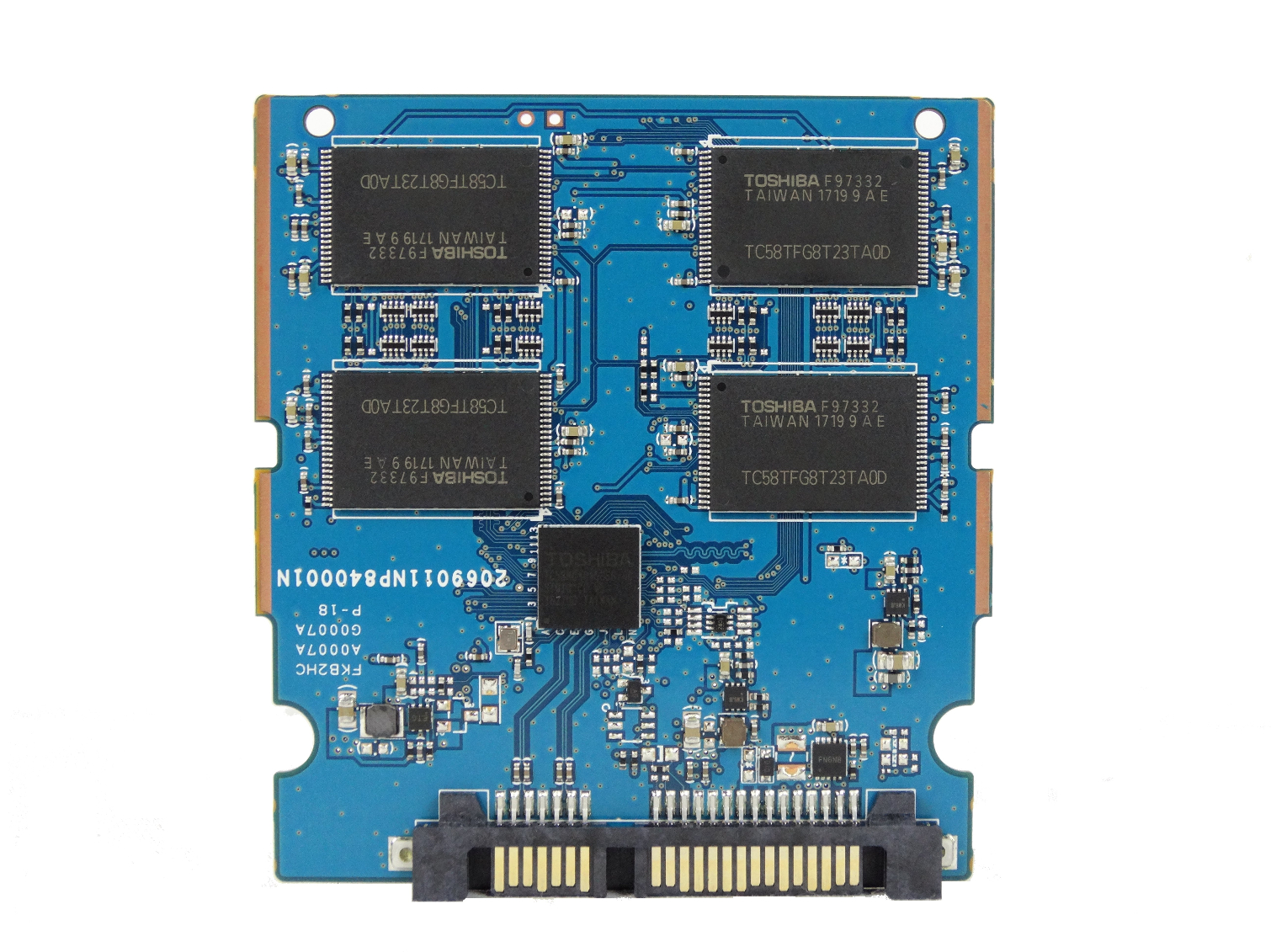

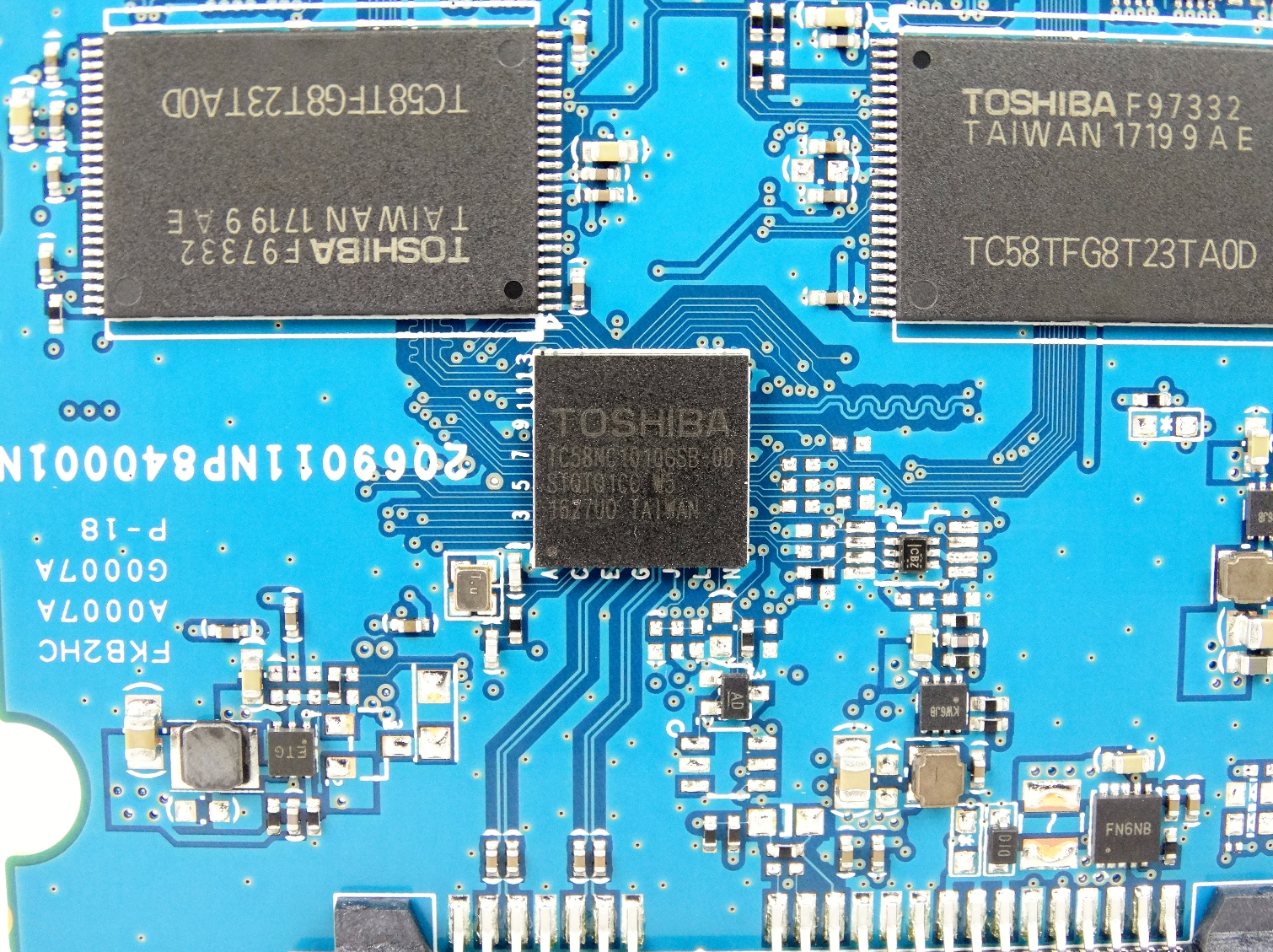

The 3D BiCS NAND is the only thing of interest we found inside the new TR200 DRAMless SSD. Unlike the XG5 we previously tested that used a ball grid array mounting scheme, this drive uses TSOP connections. That's visible as the little "fingers" on the side of the NAND package.
MORE: Best SSDs
MORE: How We Test HDDs And SSDs
MORE: All SSD Content

Chris Ramseyer was a senior contributing editor for Tom's Hardware. He tested and reviewed consumer storage.
-
Sakkura Why do they even bother releasing this as a retail product. Just work with the manufacturers of laptops and prebuilt desktops, who are only looking for a cheap way to put "SSD" on their spec sheet and don't care about performance.Reply -
Flying-Q ReplyWe don't think the 240GB and 480GB are not worthy of consideration at launch pricing.
Can you sort out the double negative please? -
AgentLozen It drives me crazy thinking that companies like Toshiba are filled to the brim with talented engineers and yet they still think the best route forward is with a DRAMless design. Are you telling me that not a single high level person compared their SSDs to the competition and said "These things are garbage. Let's stop wasting our money developing them."Reply
Sakkura suggested that these SSDs are meant to be put into prebuilt desktops as a cheap means of adding an SSD to the spec sheet. In the conclusion, the author states that "The results do not justify the means, even with a $10 decrease in component expense. The only price that users care about is what they pay, and DRAMless SSDs are not cheaper than products already on the market." NOBODY benefits from DRAMless SSDs even in a $450 prebuilt desktop.
The situation is frustrating to me because I would rather have big companies like Toshiba not waste their effort designing this crap. I enjoy reading about disruptive new products that shake up the market. I want to experience the Back to the Future 2 utopian future. Products like this take us backwards to a dystopia where the world is ruled by tremendous idiots and as of 2017 we STILL don't have flying cars. -
2Be_or_Not2Be I really dislike DRAM-less controllers. Put this terribly-performing Trash-200 drive on the same level as the Intel 600p - that is, things not to buy!Reply -
gjbaker003 In the "Pricing & Warranty" section it suggests that the $89.99 SSD is 120GB, but the rest of the article states that the $89.99 SSD is 240GB. I would assume at that price point, that 240GB is the correct size of the drive?Reply -
mapesdhs (non-zero origin in the sequential read graph again)Reply
I bet if they were included, the 840 Pro, Vector, Vertex 4 and Neutron GTX from five years ago would still be better than these new Toshiba models. I long for the day when something as good as the 850 EVO is available at a price the 850 EVO was 2 years ago (250GB for 53 UKP, 500GB for 113 UKP).
Whatever happened to SanDisk's promise to release 8TB SSDs for the consumer market by now? -
derekullo Some one lied to Toshiba marketing.Reply
The drive barely hits 300 megabytes a second with that wavy pattern.
It almost looks like the drive was thermal throttling with that pattern. -
HERETIC-1 So sad-with Toshiba 3D available was thinking the "Race to the bottom"Reply
was finally over.
A few dollars worth of Ram could have possibly made these a decent SSD.
Thro the controller could also be part of the poor performance........... -
kookykrazee I will consider SATA technology outdated when I can get 6-10TB drives that are reasonably priced. That will not happen for awhile, so when I got a free $200 BB gift card I got a 8TB drive for $179. This replaced 3 1.5-3TB drives. Gained a few degrees in my case, too :)Reply
